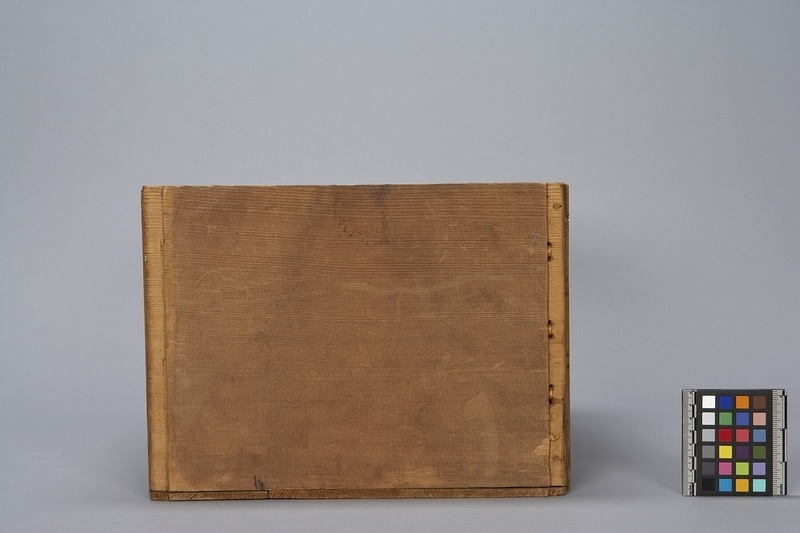Bentwood Box Item Number: A3646 from the MOA: University of British Columbia




Description
Bentwood box with straight sides, steamed, bent, corners cut-out, last corner pegged and sewn (with spruce root), bottom pegged on. Undecorated; no lid.
History Of Use
Made to illustrate the traditional woodworking technique used for making bentwood boxes.
Specific Techniques
Bentwood, or kerfed-corner, containers are constructed by a process unique to the Northwest Coast Aboriginal peoples. The carver begins with a single straight-grained plank of red cedar, or sometimes yellow cedar, spruce, or yew. The surface of the plank is finished with chisels, adzes, and knives; in earlier times, it was smoothed further with sandstone or dried sharkskin. Then three parallel kerfs, or grooves, are carved out at measured points across the width of the board, at right angles to the long edge. The kerfs, which will become three corners of the box, allow the board to be steamed until the wood fibres are softened, and then carefully bent to form a box with symmetrical sides. The final corner, as well as a fitted base, are joined and fastened with pegs (through drilled holes) or laced with spruce root or twisted cedar withes (branches). Storage boxes also have fitted lids of cedar, hollowed from the inside. Finally, painted compositions may be applied to the completed box and shallow carving added to bring the forms into relief. A well-made bentwood box is watertight. Historically, most boxes were used to store preserved foods and material goods; plain cooking boxes could be used to steam or boil food by adding water and heated stones.
Item History
- Made by Mungo Martin (Maker) in Vancouver, British Columbia, Canada during 1951
- Owned by Mungo Martin before 1951
- Received from H. R. MacMillan (Funding source) and Mungo Martin (Seller) during November 1951
What
- Name
- Bentwood Box
- Identification Number
- A3646
- Type of Item
- box
- Material
- cedar wood and spruce root
- Manufacturing Technique
- kerfed, sewn, steamed, pegged and bent
- Overall
- height 24.5 cm, width 37.5 cm, depth 33.5 cm
Who
- Culture
- Kwakwaka'wakw
- Creator
- Mungo Martin (Maker)
- Previous Owner
- Mungo Martin
- Received from
- H. R. MacMillan (Funding source) and Mungo Martin (Seller)
Where
- Holding Institution
- MOA: University of British Columbia
- Made in
- Vancouver, British Columbia, Canada
When
- Creation Date
- during 1951
- Ownership Date
- before 1951
- Acquisition Date
- during November 1951
Other
- Condition
- good
- Accession Number
- 2066/0005